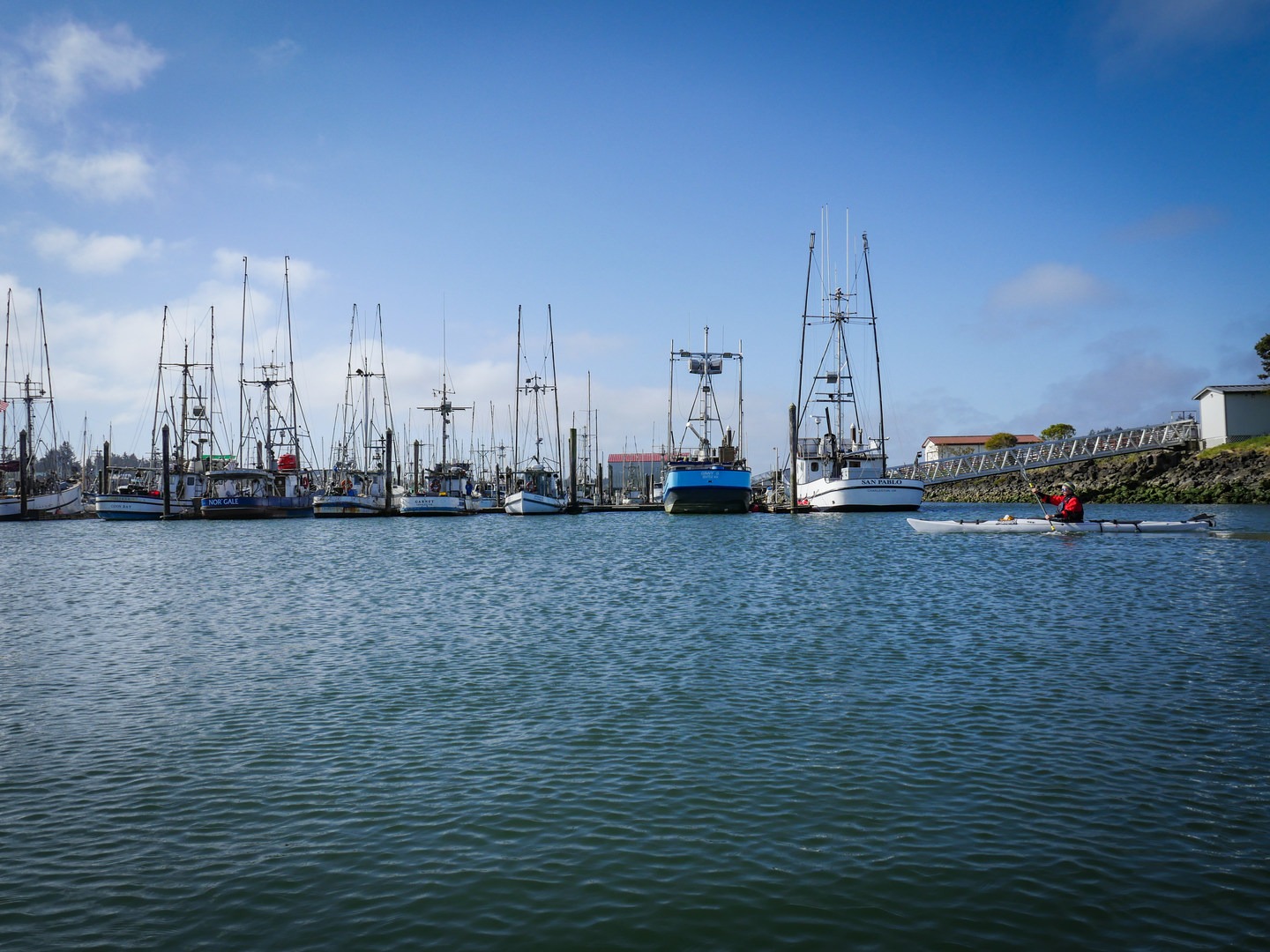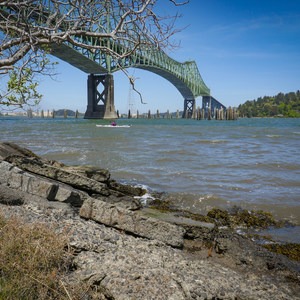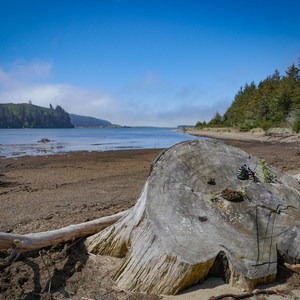You are here
The Coos Bay area, approximately 25 miles north of Bandon, offers kayaking options in the South Slough and around Charleston, where you can enjoy wildlife, wetlands, and lighthouses. The Coos Bay Estuary is fed by over two dozen freshwater tributaries and spreads nearly 20 square miles, creating numerous opportunities for year-round coastal paddling.
The paddle route at Charlestone starts at the Charleston Marina Complex, heads south under the Cape Arago Highway, and onward into the Joe Ney Slough. The Joe Ney Slough contrasts the nearby shipyards and commercial marine complexes with estuarine habitats, oyster farms, and green, pine-covered hills. Nearby is Qualman Oyster Farms, which was established in 1937 and is the areas oldest oyster farm on Coos Bay, an incredibly important industry for the area. As you paddle up the slough arm, be respectful and do not disturb the commerical oyster beds, which are sometimes marked by bamboo sticks and are located throughout the Joe Ney Slough.
Throughout the paddle, keep an eye open for various types of wildlife. Within Coos Bay, you may spot brown pelicans, harlequin ducks, oldsquaw, surfbird, and blacklegged kittiewake, yellow-billed loon, black oystercatcher, wandering tattler, rock sandpiper, bald eagles, osprey, pelagic cormorant, kingfisher, and other species of bird. It is also not uncommon to see seals, sea lions, and otters in the estuarine areas and shipyards. In spring between February and April, harbor seals will often be accompainied by their young pups. As always, keep a respectful distance from the wildlife and do your best to leave them undisturbed in their habitat. Remember, you are a visitor and this is their home. Binoculars or a camera’s zoom lens are good tools to help you see wildlife without needing to approach and distrurb them.
If you wish to extend your paddle for a longer distance, paddling to the South Slough is highly recommended. The South Slough encompasses a mixture of open water channels, tidal and freshwater wetlands, riparian areas, and forested uplands, and at the end of its southern arm is the South Slough National Estuarine Research Reserve, a 5,900-acre natural area located in the Coos Bay Estuary on the south coast of Oregon. The reserve was designated in 1974 as the first unit of the National Estuarine Research Reserve System, a network of estuary habitats protected and managed for the purposes of long-term research, education, and coastal stewardship.
Tides and winds at Coos Bay can vary, so paddlers should always be aware of the tide tables and wind forecasts and plan accordingly. Planning to ride the ebbing and flowing tides can make the paddle to Joe Ney and South sloughs a little easier. If you wish to camp in the area near Coos Bay, note that free and dispersed camping options are extremely limited on the Oregon Coast. State park and county camp areas are the most available camping options, and sites can fill up quickly in the warmer spring and summer months. Make reservations in advance.
Logistics + Planning
Current Weather: Powered by Dark Sky







Preferable season(s)
Congestion
Parking Pass
Open Year-round
Pros
Cons
Pets allowed
Put-in location (lat, long coordinates)
Take-out location (lat, long coordinates)
Water Temperature
Features
Trail type
Access
Typically multi-day
Shuttle required
Site characteristics: Water
Portage required
A profound concept originally envisioned by governor Oswald West, in 1967 the Oregon legislature ultimately realized his vision of making the entire Oregon Coast forever open to the public in a piece of landmark legislation titled the Oregon Beach Bill, officially making all 363 miles public land. "The People's Coast" is truly a one-of-a-kind coastline, a unique blend of mountains and rocky stacks, towering old growth forests, marine sanctuaries, tide pools and kelp forests, charming towns, historic fishing communities, world-class golfing, breweries, and simply jaw-dropping scenic beaches. We encourage you to plan your next trip at visittheoregoncoast.com or by calling (541) 574-2679.
























Comments
Sign In and share them.